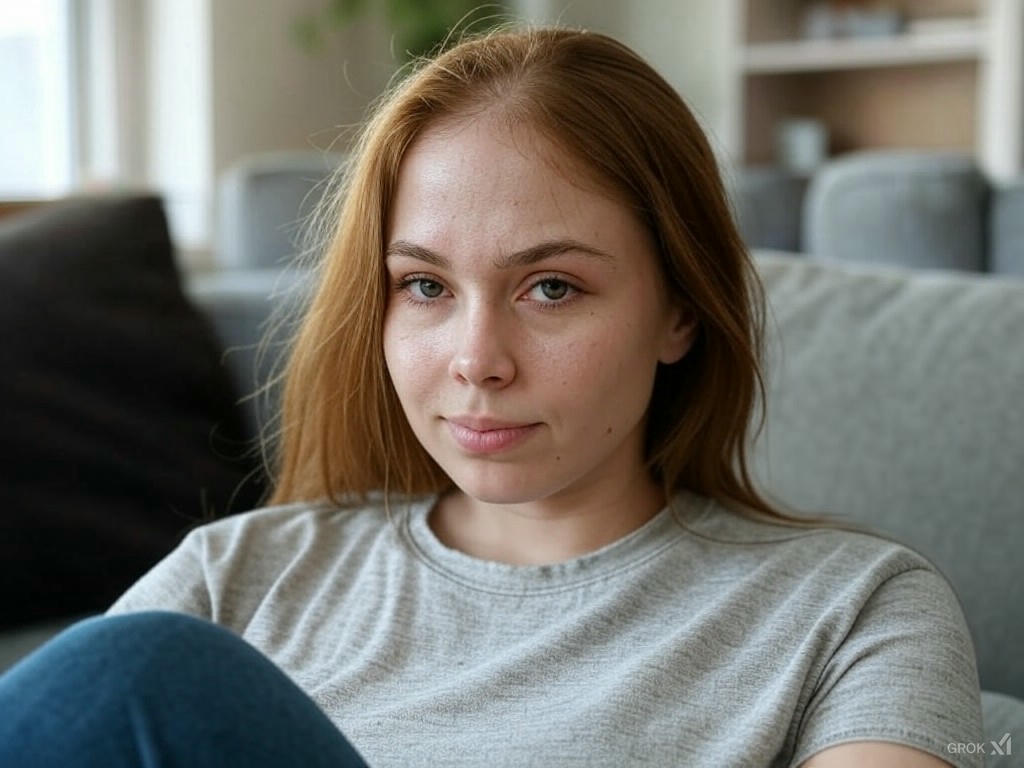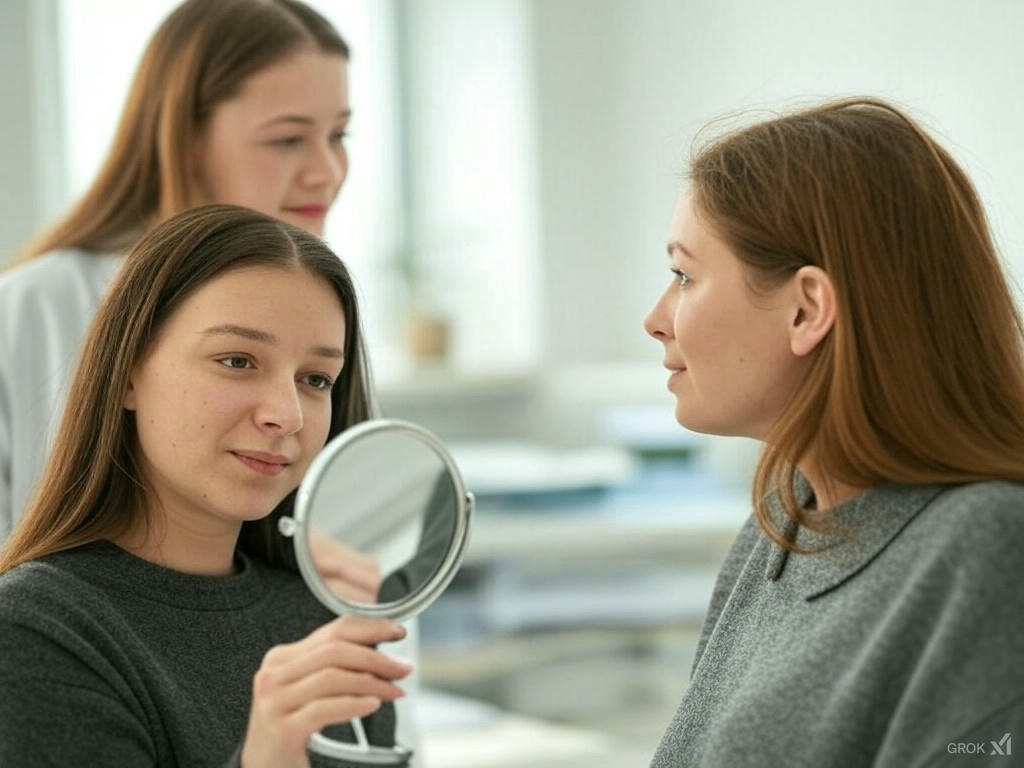1500+ ★★★★★ REVIEWS
Post-Pregnancy Hair Loss: Causes, Solutions, and Prevention

Post-pregnancy hair loss, often a surprising and distressing experience for new mothers, occurs due to hormonal shifts after childbirth, particularly the drop in estrogen levels that had supported lush hair growth during pregnancy. Known as postpartum telogen effluvium, this temporary condition typically begins around three to six months postpartum, as hair follicles transition from a prolonged growth phase to a resting phase, leading to increased shedding. While it’s a natural process that usually resolves within a year, solutions like gentle hair care and nutritional support, alongside prevention strategies such as stress management, can help ease its impact. This article explores the causes of post-pregnancy hair loss, effective management techniques, and proactive steps to minimize its effects, offering reassurance and practical guidance for new parents.
What Causes Post-Pregnancy Hair Loss?
Post-pregnancy hair loss, or postpartum telogen effluvium, is primarily triggered by dramatic hormonal changes following childbirth, particularly the rapid decline in estrogen levels that had sustained hair in its growth phase during pregnancy. While pregnant, elevated estrogen prolongs the anagen (growth) phase, resulting in thicker, fuller hair, but after delivery, as hormone levels normalize, a larger-than-usual number of hair follicles shift into the telogen (resting) phase simultaneously, causing noticeable shedding typically three to six months later. Additional factors like stress, nutritional deficiencies from breastfeeding, or lack of sleep can exacerbate the condition, though it’s generally temporary, with hair growth resuming naturally within 6 to 12 months for most women. This article delves into these biological mechanisms, explaining why this common postpartum experience occurs and what new mothers can expect.
Source: American Academy of Dermatology on Postpartum Hair Loss
When Does Postpartum Hair Loss Begin?
Postpartum hair loss typically begins between three to six months after childbirth, though the exact timing varies depending on individual hormonal shifts and lifestyle factors. This delay occurs because, during pregnancy, elevated estrogen levels keep hair in the growth phase longer, but once these levels drop post-delivery, many follicles enter the telogen (resting) phase simultaneously, leading to shedding weeks or months later. New mothers may first notice increased hair fall during routine activities like brushing or washing, with the process peaking around the four-month mark for most, though stress or nutritional changes can slightly shift this timeline. Generally self-resolving, this shedding phase aligns with the body’s natural adjustment to its pre-pregnancy state.
Source: Mayo Clinic on Postpartum Hair Shedding
Medical and Non-Medical Solutions for Postpartum Hair Loss
Postpartum hair loss, a common rite of passage for many new mothers, arises from hormonal fluctuations after childbirth, leaving hair thinner as it sheds excessively three to six months later. While this condition is usually temporary, resolving within a year, both medical and non-medical solutions can ease its physical and emotional toll. Medical options, like minoxidil or hormone-regulating treatments under a doctor’s care, may accelerate regrowth, while non-medical approaches—such as gentle hair care, nutrient-rich diets, and stress-reducing practices—offer accessible ways to support recovery and confidence. This article explores these diverse strategies, providing practical and science-backed solutions to help new moms manage and move through this natural phase with ease.
Medical Solutions
Medical solutions for postpartum hair loss aim to speed regrowth and address hormonal shifts. This section covers options like minoxidil and physician-guided treatments to support new mothers.

1. Minoxidil (Rogaine)
Minoxidil is an FDA-approved topical treatment that may help stimulate hair regrowth. However, new mothers should consult their doctors before using it, especially if breastfeeding.
2. Platelet-Rich Plasma (PRP) Therapy
PRP therapy involves injecting platelets from a patient’s blood into the scalp to encourage hair regrowth. Some studies suggest it can improve hair density.
Authority Source: American Academy of Dermatology on PRP for Hair Loss
3. Balanced Nutrition and Supplements
- Iron: Iron deficiency can contribute to hair loss. Eating iron-rich foods or taking supplements can help.
- Biotin: A popular supplement known to support hair strength.
- Vitamin D: Supports hair follicle health.
- Omega-3 Fatty Acids: Promote healthy scalp circulation.
Non-Medical Solutions
Non-medical solutions for postpartum hair loss offer creative ways to restore appearance and confidence. This section explores mesh integration, toppers, wigs, extensions, and scalp micropigmentation (SMP) as practical options for new moms.

1. Mesh Integration System
Mesh integration is a non-surgical hair restoration solution designed for women with moderate to severe hair thinning. This breathable system seamlessly integrates natural-looking hair with existing hair, offering a long-lasting and realistic result. Hottie Hair Salon & Extensions Store offers a free consultation for mesh integration services.
Learn more: Hottie Hair Mesh Integration
2. Hair Toppers
Hair toppers provide instant coverage for thinning hair at the crown, blending naturally with existing hair.
Find the perfect topper: Hottie Hair Toppers
3. Wigs and Extensions
High-quality wigs and extensions can help restore confidence during postpartum hair loss. Hottie Hair Salon & Extensions Store specializes in premium wigs and extensions tailored for new mothers.
Schedule a free consultation: Hottie Hair Extensions
4. Scalp Micropigmentation (SMP)
SMP is a cosmetic procedure that deposits pigment into the scalp to create the illusion of fuller hair, ideal for those experiencing postpartum hair thinning.
Preventing and Managing Postpartum Hair Loss
Preventing and managing postpartum hair loss relies on gentle hair care, a balanced diet, and stress management. This section highlights how these strategies can reduce shedding and support regrowth for new mothers.

1. Gentle Hair Care Routine
A gentle hair care routine can significantly ease the impact of postpartum hair loss by minimizing further damage to fragile strands during this temporary shedding phase. New mothers should opt for sulfate-free, mild shampoos and conditioners designed for sensitive scalps, washing hair no more than two to three times a week to avoid over-stripping natural oils. Brushing should be done softly with a wide-tooth comb, starting from the ends to detangle without pulling, and heat styling or harsh chemical treatments like dyes should be avoided to prevent additional stress on weakened follicles. Air-drying hair and using silk pillowcases can further reduce breakage, supporting a healthier scalp environment as hair naturally recovers over time.
2. Proper Diet and Hydration
Proper diet and hydration play a crucial role in supporting hair health during postpartum hair loss, helping to replenish nutrients that may be depleted after pregnancy and breastfeeding. A balanced diet rich in protein—found in eggs, lean meats, and legumes—provides the building blocks for hair growth, while iron from spinach or red meat and zinc from nuts and seeds strengthen follicles and reduce shedding. Omega-3 fatty acids, abundant in fish like salmon, nourish the scalp, and vitamins like biotin (eggs, avocados) and vitamin D (fortified foods or sunlight) promote regrowth. Staying hydrated with at least eight glasses of water daily ensures the scalp remains moisturized, creating an optimal environment for hair recovery as hormonal balance is restored.
3. Stress Management
Stress management is a vital strategy for mitigating postpartum hair loss, as elevated cortisol levels from the demands of new motherhood can exacerbate shedding during this hormonally sensitive period. Techniques like mindfulness meditation or deep-breathing exercises, even for just 10 minutes a day, can lower stress hormones, promoting a calmer state that supports hair follicle health. Gentle physical activities, such as postpartum yoga or short walks with the baby, boost circulation to the scalp while easing tension, and leaning on a support network—whether through friends, family, or parenting groups—helps lighten emotional loads. Prioritizing sleep, even in small naps, further reduces stress, allowing the body to focus energy on recovery and regrowth as it adjusts post-pregnancy.
Post-Pregnancy Hair Loss Frequently Asked Questions (FAQ)
When should I see a doctor about postpartum hair loss?
If it lasts over a year or seems excessive, consult a doctor to explore underlying issues.
What causes post-pregnancy hair loss?
It’s triggered by a drop in estrogen after childbirth, shifting hair follicles into the resting phase, causing shedding.
When does postpartum hair loss typically begin?
It usually starts 3 to 6 months postpartum as hormones normalize.
How long does postpartum hair loss last?
It typically resolves within 6 to 12 months as hair growth resumes naturally.
Is postpartum hair loss permanent?
No, it’s almost always temporary, though regrowth might differ in texture or thickness.
Can breastfeeding worsen hair loss?
It may play a small role due to nutrient demands, but hormones are the main cause.
Can mesh integration help with postpartum hair loss?
Yes, mesh integration adds volume discreetly; check out Hottie Hair Salon & Extensions Store for expert options.
Are hair toppers a good solution for thinning hair postpartum?
Absolutely, toppers blend seamlessly with natural hair—Hottie Hair Salon & Extensions Store offers great styles.
Should I consider wigs or extensions during postpartum shedding?
Wigs and extensions can boost confidence; Hottie Hair Salon & Extensions Store has quality choices tailored for you.
Can diet and stress management reduce hair loss?
Yes, a balanced diet and stress relief support recovery and may lessen shedding.

Post-pregnancy hair loss can be a frustrating experience, but with the right solutions, new mothers can regain their confidence and maintain their personal style. Whether through medical treatments, non-surgical options like mesh integration, or premium wigs and extensions, there are effective ways to manage hair loss. Visit Hottie Hair Salon & Extensions Store for a free consultation on expert hair restoration solutions.
You must be logged in to post a comment.